If you want to know about the fire installation and landscape in tall building or history of tall building or auditorium design, please click the link.
Fire installation and landscape are two important considerations when designing tall buildings. Here are some key points to keep in mind for each:
Fire installation
- Fire detection and suppression systems should be installed throughout the building. This can include smoke detectors, fire sprinklers, fire extinguishers, and other fire suppression systems.
- Emergency escape routes should be clearly marked and easy to access. These routes should be designed to allow occupants to evacuate the building quickly and safely in the event of a fire.
- Building materials should be chosen with fire safety in mind. This includes selecting materials that are less likely to burn or spread flames, such as concrete or steel.
- Building codes and regulations should be followed closely to ensure that the building meets all fire safety requirements.
- Regular fire safety inspections should be conducted to ensure that all fire safety systems are in good working order and that any potential fire hazards are identified and addressed.
Landscape
- Green spaces should be incorporated into the building’s design to provide natural beauty and help reduce heat buildup in urban areas.
- The landscape should be designed to be functional, with areas for walking, seating, and gathering.
- Plants should be chosen for their ability to thrive in an urban environment, with consideration given to the amount of sunlight, shade, and water they require.
- Sustainable landscaping practices, such as rainwater harvesting and using native plants, should be incorporated to reduce the building’s environmental impact.
- Safety should be a key consideration when designing the landscape, with features such as lighting and clear lines of sight to prevent crime and ensure that occupants feel safe.
1) Fire installation
Fire installation is critical to ensure the safety of the occupants in case of a fire.
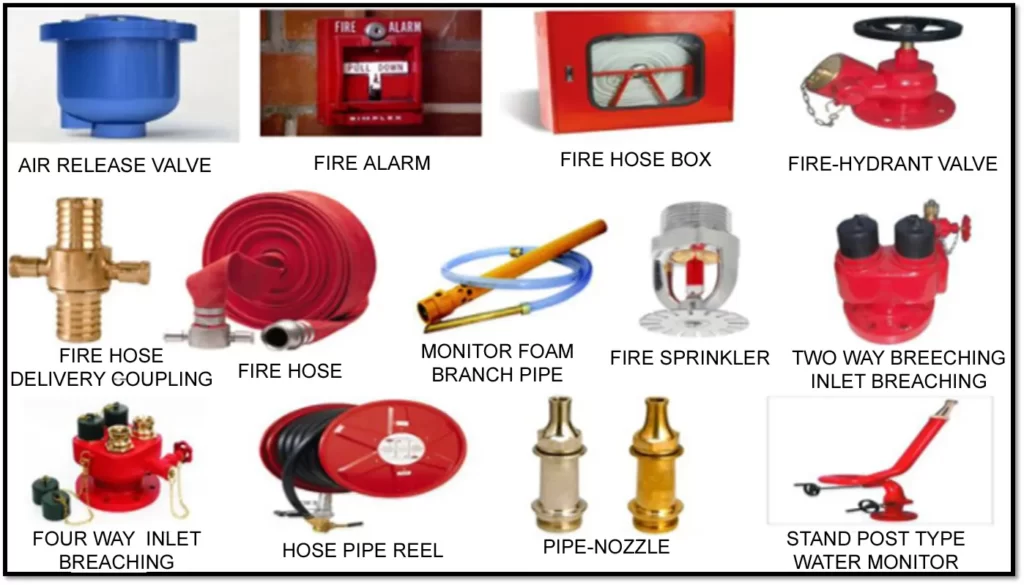
2) A 60m high residential building requires…..
i) Fire extinguishers – required


ii) Down comer – not required!!….
- Difference between a down comer and a dry riser is that down comer is connected to an overhead tank and a terrace pump whereas dry riser remains dry normally.
- It can be charged with water from ground level by fire brigade on their arrival by making connection via fire brigade inlets provided at the bottom of such dry risers.
iii) Yard hydrants
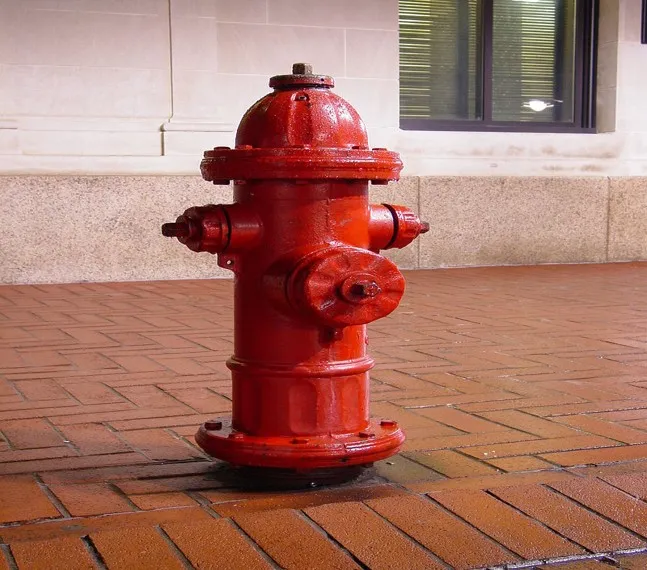
- A fire hydrant, also called a fireplug or simply a plug, is a connection point by which firefighters can tap into a water supply.
- It is a component of active fire protection.
iv) Automatic sprinkler system

- A fire sprinkler system is an active fire protection method, consisting of a water supply system, providing adequate pressure and flowrate to a water distribution piping system, onto which fire sprinklers are connected.
- Although historically only used in factories and large commercial buildings, systems for homes and small buildings are now available at a cost-effective price.
- Manually operated electronic fire alarm system & automatic detection and alarm system.

U.G.T. With a combined capacity for sprinklers, yard hydrants and wet risers – 200000 lts. – Required.
- Fire Pump with 3.5 kg/sqcm at remotest location.
- Provide required number of sets of pumps each consisting of two electric and one diesel pump (stand by) of capacity 2850 litre/min and two electric pump of capacity 180 litre/min.
- Lower levels in high rise buildings 60 m or above in height are likely to experience high pressure and therefore, it is recommended to consider multi-stage, multi-outlet pumps (creating pressure zones) or variable frequency drive pumps or any other equivalent arrangement.
- One set of pumps shall be provided for each 100 hydrants or part thereof, with a maximum of two sets. In case of more than one pump set installation, both pump sets shall be interconnected at their delivery headers.

- Terrace tank of 10000 lts. Capacity over respective tower terrace – no pumps required.

3) Landscape
On the other hand, landscape is important for creating a functional and visually appealing space around the building. Incorporating green spaces and plants can help reduce heat buildup in urban areas and provide natural beauty.
4) Landscaping in high rise buildings

- Humans have grown plants atop structures since antiquity.
- The ziggurats of ancient Mesopotamia (4th millennium BC–600 BC) had plantings of trees and shrubs on aboveground terraces.
- The medieval Egyptian city of Fustat had a number of high-rise buildings that Nasir Khusraw in the early 11th century described as rising up to 14 stories, with roof gardens on the top story complete with ox-drawn water wheels for irrigating them
- Outdoor green spaces in high-rise buildings allow passive approach of green design by the means of natural ventilation. These gardens are often designed in the form of sky court, balcony, rooftop, and terrace with paving, seating, and deep layers of substrates for garden landscaping.
- Like landscaping, gardening involves design, planning and maintenance, but gardening usually involves only the plants in a space.
- Landscape designers and gardeners can sketch a design for a garden and determine a plant list, but only the gardeners will plant, weed, cultivate, replace and harvest the plants.
- As cities grow, permeable substrates are replaced by impervious structures such as buildings and paved roads. Storm water run-off and combined sewage overflow events are now major problems for many cities with highrises. A key solution is to reduce peak flow by delaying or retaining run-off. Rooftop gardens can delay peak flow and retain the run-off for later use by the plants.
4) Green roof – challenges for tall buildings
- Tall buildings present substantial challenges for green roofs. The first is wind uplift. This is a physical phenomenon that presents certain design and engineering considerations.
- Wind Uplift : wind accelerates as it passes over the roof edge or parapet, causing a pressure differential and lifting force, uplift, that is exerted upon the rooftop. Redirected winds of this nature tend to whirl and swirl, often in cone shaped vortices which can aggressively scour roof surfaces and components. Such forces are typically greatest in the corners of the roof, secondarily along the parapet walls, and to a lesser degree in the “field” or center part of the roof. Uplift forces vary with the building shape and height, parapet shape and height, overall exposure, size of openings, etc.
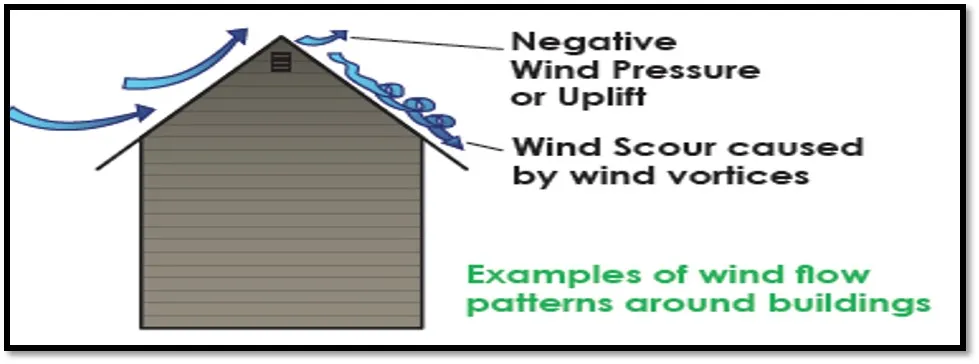
- Very tall buildings, for example over 20 stories tall, are subject to virtually constant wind. This in itself is not a problem as it can easily be offset with irrigation, and we would consider a built-in irrigation system mandatory on any tall building regardless of climate.
- There are two types of green roof: intensive roofs, which are thicker, with a minimum depth of 12.8 cm (5.0 in), and can support a wider variety of plants but are heavier and require more maintenance, and extensive roofs, which are shallow, ranging in depth from 2 cm (0.79 in) to 12.7 cm (5.0 in), lighter than intensive green roofs, and require minimal maintenance
- Green roofs also provide habitats for plants, insects, and animals that otherwise have limited natural space in cities. Even in high-rise urban settings as tall as 19 stories, it has been found that green roofs can attract beneficial insects, birds, bees and butterflies.
- Green roofing can extend the lifespan of a roof by over 200% by covering the waterproofing membrane with growing medium and vegetation, this shields the membrane from ultra-violet radiation and physical damage.
5) Vertical garden

- Recent developments have tried to soften the friction between nature and the urban environment by incorporating a plethora of plants and living organisms into architectural designs and creating ‘vertical gardens’ that utilize vertical rather than ground space and allow plants to flourish.
- Glimpse of a Green Future at Singapore.
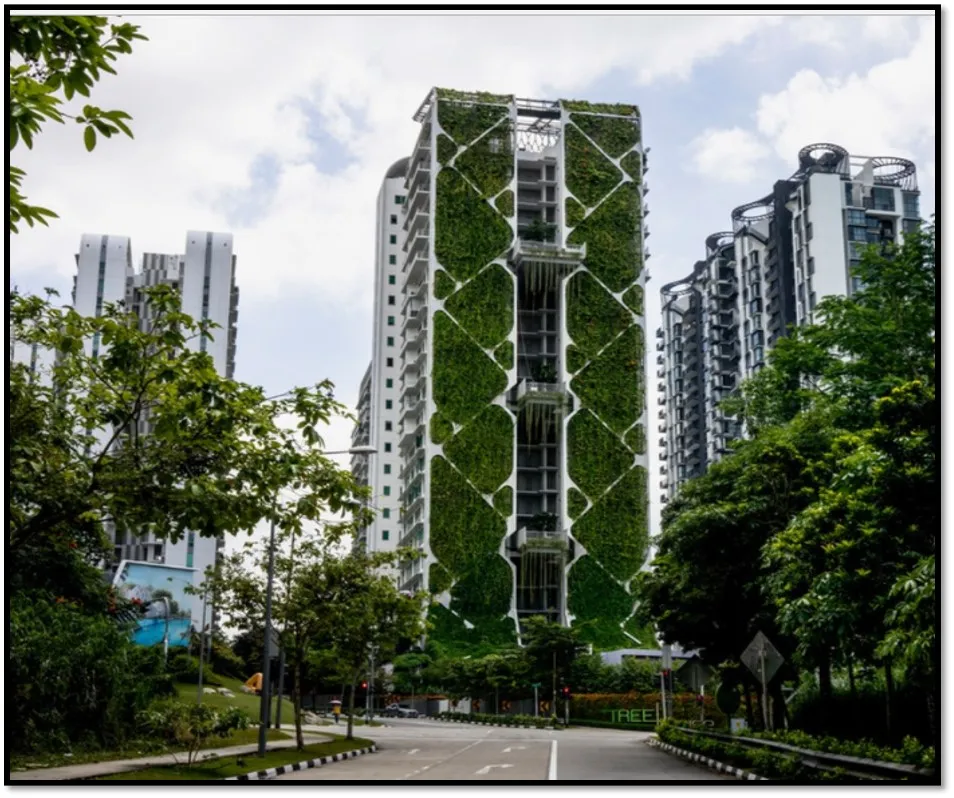
- 2,289 square metre. Treehouse apartments on Chestnut Avenue in Singapore can claim the Guinness World Record for the world’s overall largest vertical garden. Recently completed, this innovative building’s soaring green wall measures an amazing 24 storeys tall and is expected to save the complex more than $500,000 in energy and water costs annually.
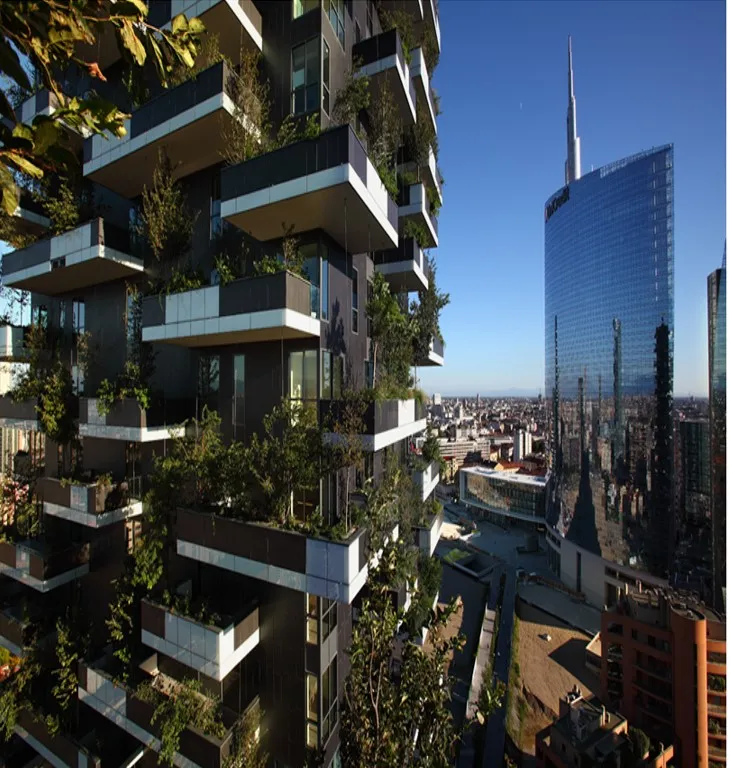
- At the present time, the level of experience and bona fide research with green roofs on tall buildings is limited. No one can say “on the 35th floor in New York City, you can effectively grow these five species of plants.” Therefore, at present we must rely upon anecdotal experiences, common sense, and horticultural know-how.
- The Bosco Verticale in Milan, is a pair of residential towers with 800 trees and thousands of plants on concrete balconies, maintained with recycled water.
Overall, incorporating both fire installation and landscape considerations into the design of a tall building can create a safe, functional, and visually appealing space for occupants.